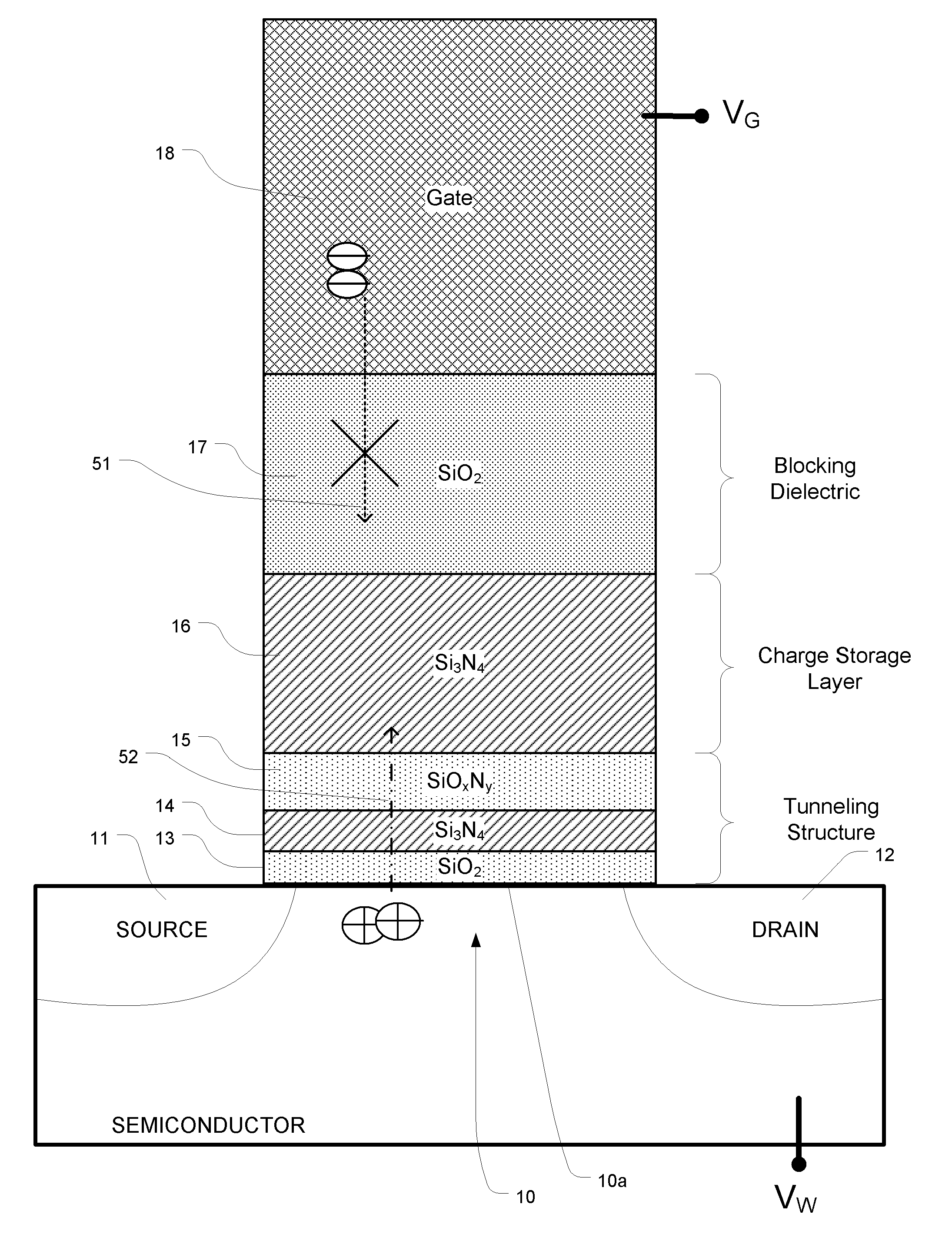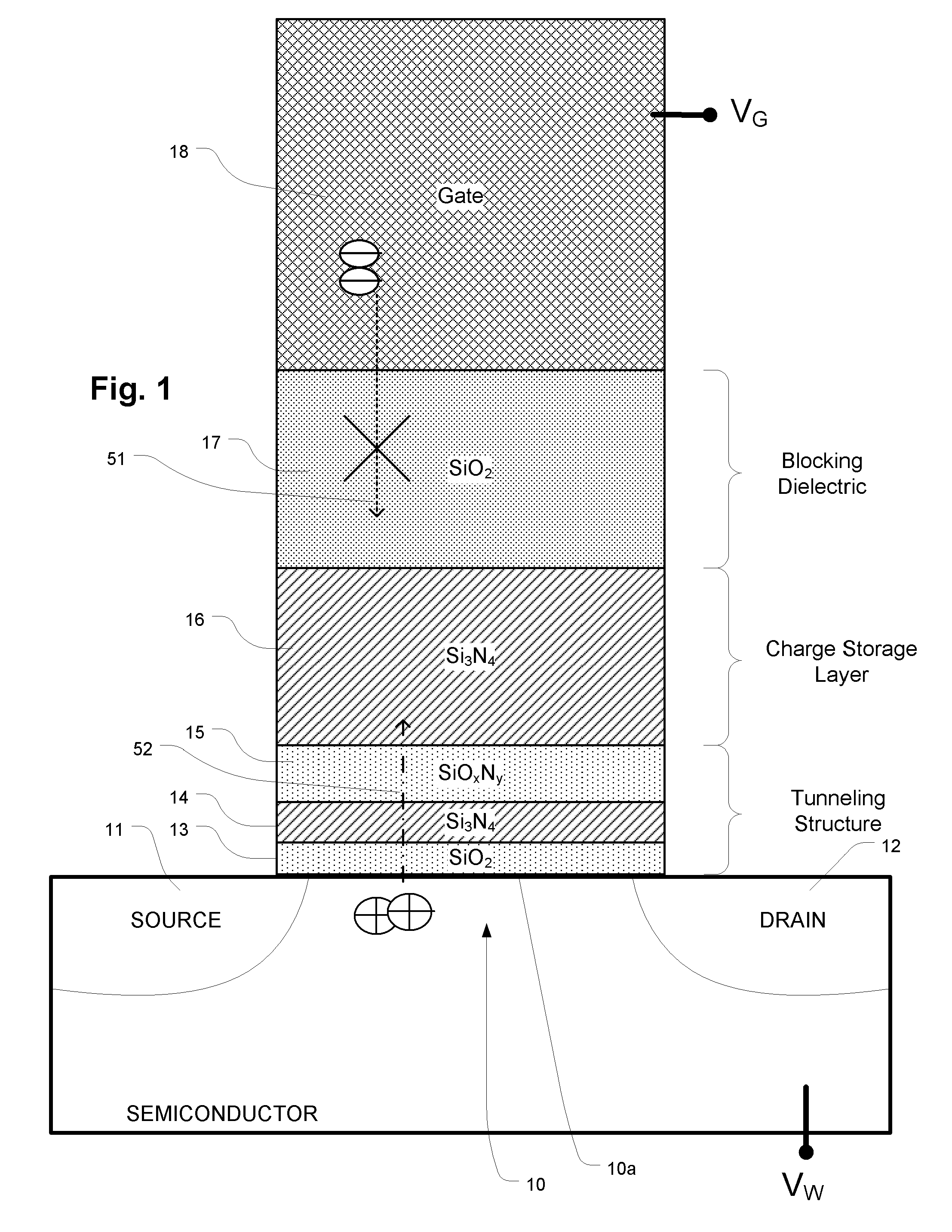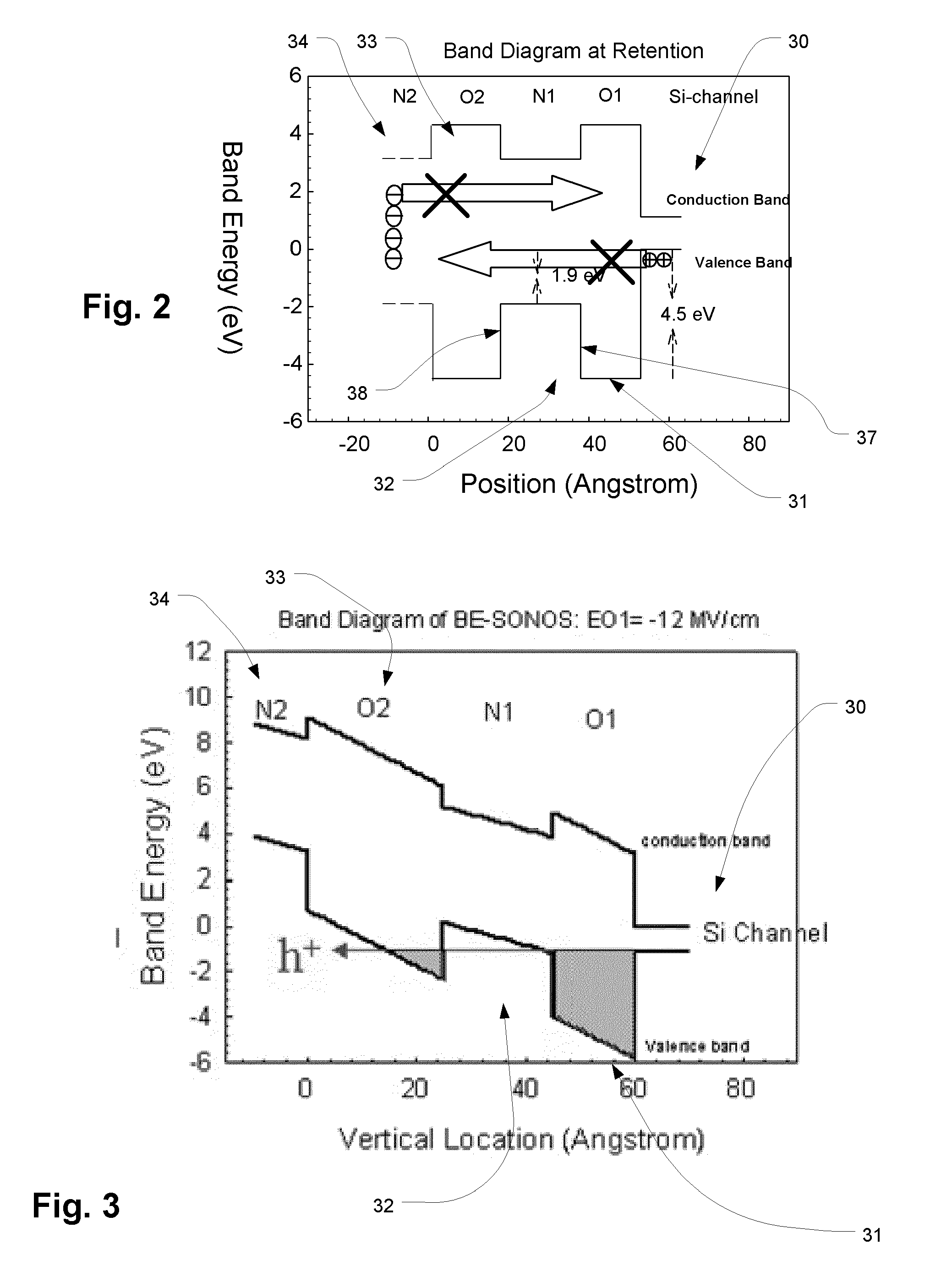Charge trapping memory cell having bandgap engineered tunneling structure with oxynitride isolation layer
a charge-trapping memory cell and tunneling structure technology, applied in the field of flash memory technology, can solve the problems of limiting the ability to increase the density of flash memory, affecting the speed of erase, and affecting the endurance and charge retention characteristics of memory cells relative to traditional floating gate technology, so as to achieve the effect of increasing the speed of erase in the hole tunneling
- Summary
- Abstract
- Description
- Claims
- Application Information
AI Technical Summary
Benefits of technology
Problems solved by technology
Method used
Image
Examples
Embodiment Construction
with various concentrations of nitrogen.
[0035]FIG. 20 plots the results of testing charge trapping efficiency by applying ISPP programming operations to test structures having SiON charge trapping layers with various concentrations of nitrogen.
[0036]FIG. 21 is a schematic diagram of a NAND-type memory array employing memory cells according to the present invention.
[0037]FIG. 22 is a simplified cross-sectional view of memory cells according to the present invention in a NAND configuration, taken perpendicular to word lines.
[0038]FIG. 23 is a simplified cross-sectional view of memory cells according to the present invention in a NAND configuration, taken through a word line.
[0039]FIG. 24 is a block diagram of an integrated circuit memory employing memory cells and bias circuitry according to embodiments of the present invention.
DETAILED DESCRIPTION
[0040]A detailed description of embodiments of the present invention is provided with reference to the FIGS. 1-24.
[0041]FIG. 1 is a simplif...
PUM
 Login to View More
Login to View More Abstract
Description
Claims
Application Information
 Login to View More
Login to View More - R&D
- Intellectual Property
- Life Sciences
- Materials
- Tech Scout
- Unparalleled Data Quality
- Higher Quality Content
- 60% Fewer Hallucinations
Browse by: Latest US Patents, China's latest patents, Technical Efficacy Thesaurus, Application Domain, Technology Topic, Popular Technical Reports.
© 2025 PatSnap. All rights reserved.Legal|Privacy policy|Modern Slavery Act Transparency Statement|Sitemap|About US| Contact US: help@patsnap.com



